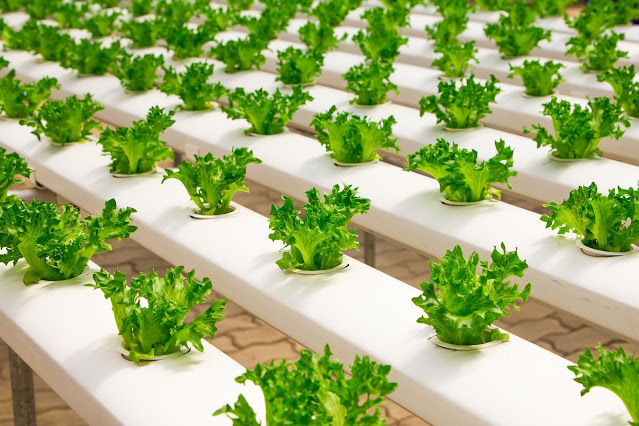Cucumbers are native to India and this leaves its mark on their preferences. Let's find out how to properly grow them, plant, and care for them.
Cucumbers are a very early ripening crop, early varieties yield a harvest within 40 days after germination. However, even the late ones begin to bear fruit early - after 60 days. However, few people manage to get maximum yields - cucumbers quickly fall ill and dry out. Often this is from improper care. Therefore, it is important to provide this culture with the most comfortable conditions.
Growing cucumbers
To get a good harvest of cucumbers, we need to provide two main conditions: good light and warmth. Therefore, they should be planted in the sunniest area - where they will receive the maximum amount of light and heat.
Almost any soil is suitable for cucumbers, with a reaction close to neutral or slightly acidic. But they grow best in fertile areas with light soils rich in organic matter. If the soil on the site is too dense, it is useful to add humus or compost to it before sowing cucumbers, and then dig it up.
planting cucumbers
In the middle lane, cucumber seeds are sown immediately in open ground - usually after May 25. Before sowing, it is useful to soak them for 12 hours in warm water (25 - 30 ° C). And then they need to be wrapped in a damp cloth and sent to the refrigerator for 2 days - hardening the seeds will subsequently help the plants to better endure cold snaps.
Before sowing, seeds can be germinated in a damp cloth in a warm place - this way they will sprout faster.
But please note: Soaking can only be used on seeds that have not been treated with anything. And recently, cucumber seeds are often sold painted in bright colors - this is a sign that they are covered with a protective compound against diseases. These seeds are best sown dry. The most that can be done is to germinate. All other "water procedures" are contraindicated for them - the protective layer will be washed off.
And one more thing: it is best to sow old seeds that have lain for at least 3-4 years - they are the most fertile. Fresh seeds produce a lot of barren flowers.
Seeds of cucumbers are sown in holes of 2 - 3 pcs. to a depth of 1 - 2 cm. If in the future the cucumbers are tied to the trellis, then the distance between the holes should be 25 cm. If it is supposed to grow them in spread, then the sowing scheme is as follows:
· between rows - 60 cm;
· in a row - 30 cm.
When the first true leaf appears at the seedlings, they need to be thinned out - leave only one strongest sprout in each hole.
Outdoor cucumber care
Cucumbers are very fertile, they have great harvest potential, especially in modern hybrids. But in order for them to express themselves to the fullest, they must be watered often and abundantly and fed in a timely manner.
- Watering: The frequency of watering depends on the stage of development of the cucumber. The scheme is as follows:
· before flowering - once a week;
· during fruiting - every 3 - 4 days, and if heat and drought - every day.
- Watering rate - 2 - 2.5 liters per 1 sq. m.
- water strictly at the root - if water gets on the leaves, mushroom diseases will begin to develop faster;
- water only with warm water - otherwise the ovaries will begin to fall off;
- water in the morning so that the topsoil has time to dry out during the day - wet ground, combined with night coolness, leads to outbreaks of disease.
Topdressing
It happens that it is spilled well, with warm water, but the ovaries still fall off. The reason is the lack of fertilizers. It even happens that humus was brought under the cucumbers, fed with nitrogen for good growth, but the ovaries still fall off. This is because nitrogen alone is not enough for them - they need good nutrition. And to provide them with all the elements, plants need to be fed 4 times over the summer:
2 weeks after germination: 15 g of ammonium nitrate (1 tablespoon), 20 g of double superphosphate (4 teaspoons), and 20 g of potassium sulfate (1 tablespoon) per 10 liters of water - 1 liter per bush;
at the time of flowering: 0.5 l of mullein, 15 g of nitrophoska (1 tablespoon), 100 g of wood ash (1 glass) and trace elements (0.5 g of boric acid and 0.3 g of manganese sulfate) per 10 l of water - 3 liters per 1 sq. m;
during mass fruiting: 50 g of urea (5 tablespoons), 100 g of ash (1 glass), and 40 g of potassium sulfate (2 tablespoons) per 10 liters of water - 1 liter per bush;
2 weeks after the third feeding - 1 glass of ash under the bush.
Harvesting cucumbers
Cucumbers are tied very quickly and in large quantities, so they need to be harvested often - 2 - 3 times a week.
- Do not let the cucumbers overgrow on the bushes, - advises the agronomists-breeders Overripe fruits take away a lot of nutrients from the plant, and there is little use from them - they are no longer very good for conservation and are not suitable for salads because they are too rough. The rule is: the more often you harvest, the faster new greens are tied.
Cucumber storage rules
Fresh cucumbers are not stored for long - they can lie in the refrigerator for up to 20 days, provided that the temperature there is about 0 ° C. But since it is usually in the region of 4 - 6 ° С, they lie much less. But there are 2 ways to help prolong their life.
In packages. Fold the cucumbers in tight plastic bags, squeeze them to remove air as much as possible, and tie them up - in this form, at a temperature of about 10 ° C, the fruits can be stored for up to 30 days, and sometimes longer.
In egg white. Pick cucumbers with long stalks, wash and dry. Beat the egg white lightly and spread it evenly over the fruit. Then hang them by the stalks in a cool and dry place - this way they can stay fresh for several months: the dried egg white forms a dense crust that protects the cucumbers from wilting and spoilage.



